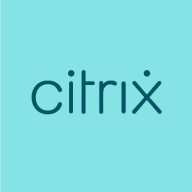


Find out in this report how the two Enterprise Mobility Management (EMM) solutions compare in terms of features, pricing, service and support, easy of deployment, and ROI.
Everything we've gained from it makes my job easier day after day, and I see value in it as an engineer.
Microsoft Intune not only saves costs by reducing the number of personnel needed but also offers a comprehensive solution for managing laptops, applications, security, individual access, and enrollment.
Importantly, when someone leaves the company, it helps protect document access on their devices.
After implementing Citrix Endpoint Management, there is a return on investment for my customers because we provide three services: first is the license, where we got margin; second, deployment service, which typically has two types—one where Citrix will do the deployment and the other where a partner should do it, and we deploy this solution for about 80% of the customers in India; third is after deployment support.
When a support ticket is submitted, it directly reaches someone with Intune support expertise.
When I contacted Microsoft, they had the same expertise, if not more, which is phenomenal because I felt heard and my problem was solved.
Sometimes, the support provided is excellent, and the representative is knowledgeable, while other times, the service needs improvement.
I am definitely satisfied with Cisco support.
My experience with the technical support of Cisco Meraki Systems Manager (MDM+EMM) involves configuring firewalls and troubleshooting switches and IPs, which is our primary focus.
Technical support for Citrix Endpoint Management is not satisfactory.
This product requires some mature understanding, so sometimes they can handle small problems, but for major or architecture-related issues, their L3 or our L3 engineer helps them understand the problem.
The support from Citrix has been satisfactory.
The scalability of Microsoft Intune is ten out of ten.
Ideally, we want to automatically segregate devices based on user properties like primary use, but currently, dynamic groups seem limited to device properties.
It supports organizations with 200 endpoints and those with more than 15,000 endpoints.
I affirm that Cisco Meraki Systems Manager (MDM+EMM) is very scalable.
Cisco Meraki Systems Manager (MDM+EMM) is very scalable, as we can configure multiple devices, handling a lot of devices, such as 100 plus devices.
My colleagues using iOS have faced issues, such as logging problems requiring frequent password entries.
We have not experienced downtime, bugs, or glitches.
It appears Microsoft Intune undergoes changes without informing customers.
Microsoft Intune has been very stable.
I rate the stability of Cisco Meraki Systems Manager (MDM+EMM) as an eight to nine.
The solution's stability is below expectations.
The solution is stable, though there are occasional restarts, which are not critical.
Features like unlocking devices sometimes fail, and the support offered for other operating systems is insufficient.
There are communication issues, so you might start working with a feature without knowing if it will be deprecated six months from now.
Many third-party companies offer single-pane-of-glass reporting that shows you what your update environment looks like, how your patch is doing, application status, etc., but Intune's reporting is not intuitive.
I see room for improvement in integration with third-party tools.
An area of Cisco Meraki Systems Manager (MDM+EMM) that could be improved is if we could connect directly with the responsible person from that device, which would be very useful.
The main issue is the change from perpetual licenses to subscription-based ones, which has increased our costs significantly.
With AI being present, they may increase some AI-related features in the future.
The units are not updating the operating system as specified in the policy.
Introductory professional services, like a fast-track service, were included with our E5 membership, and there have been no additional costs.
The Intune suite and add-ons, such as batch management and remote help, are costly.
It costs approximately forty euros per user per month.
There are cheaper and more expensive tools available, but the price features parity is good.
The switch to subscription-based licensing has made it much more expensive.
For this client, the solution has been quite cheap.
The setup cost pricing for Citrix Endpoint Management varies; I can say $3,000 per user license for setup.
Intune excels in configuration and compliance management for Windows 10, ensuring devices receive timely updates and adhere to organizational standards.
Dynamic groups allow us to set conditions for automatic membership, eliminating the need for user intervention or manual review and ensuring a seamless workflow.
Windows Autopatch is the most valuable because it removes the burden of patch management.
Features such as being very easy to use and troubleshoot have been the most valuable for me, and we can identify if there are any hardware issues easily.
The remote security feature, as well as the ability to control devices from anywhere, is one of the more beneficial features of Cisco Meraki Systems Manager (MDM+EMM).
We have found the ability to manage user accounts on shared devices valuable as it reduces the need for multiple licenses, which saves costs.
The change to a subscription-based model has removed the financial benefit we previously had.
| Product | Market Share (%) |
|---|---|
| Cisco Meraki Systems Manager (MDM+EMM) | 2.2% |
| Microsoft Intune | 31.3% |
| Workspace ONE UEM | 11.6% |
| Other | 54.9% |
| Product | Market Share (%) |
|---|---|
| Citrix Endpoint Management | 2.0% |
| Microsoft Intune | 31.0% |
| Workspace ONE UEM | 13.0% |
| Other | 54.0% |



| Company Size | Count |
|---|---|
| Small Business | 116 |
| Midsize Enterprise | 46 |
| Large Enterprise | 152 |
| Company Size | Count |
|---|---|
| Small Business | 16 |
| Midsize Enterprise | 5 |
| Large Enterprise | 14 |
| Company Size | Count |
|---|---|
| Small Business | 6 |
| Midsize Enterprise | 3 |
| Large Enterprise | 5 |
Microsoft Intune provides centralized management of mobile devices and applications, ensuring security, compliance, and productivity through integration with Microsoft services like Microsoft 365 and Azure Active Directory.
Organizations use Intune for managing mobile devices and applications, enhancing security and compliance across platforms. With features like single sign-on, conditional access, and zero-touch deployment via Autopilot, it facilitates efficient operations. Intune's scalability, easy enrollment, and capabilities such as remote wipe support diverse device management, offering robust data protection and efficient operation. Despite its features, improvement areas include reporting, compatibility with non-Microsoft devices, and better support for macOS and Linux devices.
What are the key features of Microsoft Intune?
What benefits should users look for in reviews?
In industries such as finance, healthcare, and education, Microsoft Intune is implemented to ensure secure and compliant device management. Companies leverage its capabilities to deploy security policies and manage both corporate-owned and BYOD environments, facilitating a unified approach to data protection and compliance.
Every user is unique. Every device, a bit different. Systems Manager keeps the network in the loop about constantly changing devices, automatically tracking device posture and adjusting security policies to match.
XenMobile is a comprehensive solution to manage mobile apps, data and devices, available both on-premises and in the cloud. Users have single-click access to all of their apps from a unified corporate app store and IT can easily configure, secure and support mobile devices. With XenMobile technology, IT can meet their compliance and control needs while giving users the freedom to experience work and life their way.
We monitor all Enterprise Mobility Management (EMM) reviews to prevent fraudulent reviews and keep review quality high. We do not post reviews by company employees or direct competitors. We validate each review for authenticity via cross-reference with LinkedIn, and personal follow-up with the reviewer when necessary.